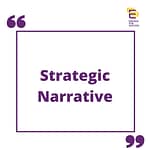Digital marketing has changed the way companies interact with customers and how leaders interact with employees. As a business leader, influencing the people around you, ensuring alignment and effective communication is a stepping stone to the success of a business. In this article, we will aim to determine why leadership is now the strongest marketing strategy. Good direction control and management that is based on customer-focused marketing is why leadership is a strong marketing strategy.
Leadership as a marketing strategy
There are over 100 market strategies that have been used by organisations over time. The difference between loved companies and disreputable ones lies with the perception of the public. Marketing is an art that should have the potential to answer the question ‘why’. Only those whose needs are captivated in the brand or product advertised will have demand for it. An effective market strategy requires efforts that will generate the desired outcome: closing sales. Although content marketing is considered to be the premise of modern marketing, it is all in vain without good leadership. The market strategy should focus on the consumer before the branding. Good captain is aware of this and is constantly looking for ways to communicate across all channels, consumer acquisition and engagement, getting more clients and client retention.
Leadership
A market strategy advises on saying what, how and who the brand target is in order to make sales. The decision on how the information is transmitted and received by consumers is determined by the company’s leadership that is, Chief Executive Officer (CEO) and the Chief Marketing Officer (CMO). Leadership is the ability of an individual to define the mission, vision, and objectives of an organisation focusing on the employees and the consumers. Establishing leadership with innovative overall strategies, intense business intellect and an aggressive drive in customer satisfaction aids in gaining market share.
Customer Centricity
A CMO is bent on creating lasting relationships between employees and consumers. These co-relations are determined by:
- Collaboration and interconnection
- Leadership skills
- Communication and empathy
Collaboration and interconnection. A collaborative relationship occurs when people work together to accomplish similar to objectives. Working around complexities may lead to work alignment through numerous debates, unanimity, and sharing of different views to achieve a common goal. Developing a focus that is customer-based (purpose-driven brands) builds strong relations with consumers. This is made possible through co-creation. Fostering trust between an organisation and the consumers drives up the organisation’s position in the market.
Leadership skills. Creating end-to-end experiences and anticipating customer needs offers a holistic approach in analysing, defining and understanding individual client partialities. Analytical skills are important in problem-solving in the business. A leader does research to figure out how many people are searching for solutions for problems the organisations can solve. Leadership, being a relevant market strategy, offers advocacy for consumers. Ensuring that consumers gain the promised benefits is the nub for return clientele.
Communication and empathy. In this digital and marketing age, clients want to have a personalised approach with vendors. Research study conducted by Confident Writers shows that by the year 2018 organisations that humanise their services will have an elevated success rate of 30% compared to those that don’t interact with consumers and tapping into the customer base, understanding that consumers are not rational but predictable will help deliver exceptional experiences.
According to Jim Stengel, former CMO of P&G, brands that focus on customers are more successful than the ones that focus on themselves. He based this theory on the stock market. Investments made at the same time had different stock rates 10 years down the line. Purpose-driven brands had 400% higher gross rate in stock than the brand focused ones. Understanding the shifting customer demographics, targeting relevant market segments and effective problem solving is the thin line between success and failure in a business.
Leaders who harness insights on consumer preferences, representing consumer wants and needs and developing a greater level of strategic influence translate success to the organisation. There is a change in consumer preferences from automation to human interaction. People prefer vendors that engage them as they would a friend. These strategies are made possible through leaders in the organisation. The current marketing community has shifted from business-to-business and business-to-consumer to consumer-to-business.
Author: Paul Bates – Content Marketing Expert & speaker at various EdTech Marketing conferences.
Photo credit: Mathias Jensen on Unsplash





I have been in your shoes. It’s so hard to know what to do so I can’t stress the importance of having a Mentor enough! My Mentor (who I found on https://www.lisnic.com saved me from making so many stupid mistakes, I don’t know how my company would’ve survived without one.
I am currently in a Leadership program in Nursing I have a large interest in marketing. I am a special needs mom and helping others and making them feel special is my passion.. Thank you for the article I enjoyed reading it…
This article gave me an idea about leadership as a marketing strategy. Leaders with powerful insights develop strategic influence that translates success to the organization. Looking forward for more valuable idea about marketing strategy.
If you are interested in running a company or being in a leadership role, having a strong digital marketing background can help you get there. Good direction control and management that is based on customer-focused marketing is why leadership is a strong marketing strategy. To know more about the leadership visit @ https://pravinchandan.com/
This was a great article about leadership. Mentors are very important. I look forward to learning more from you, thank you very much!